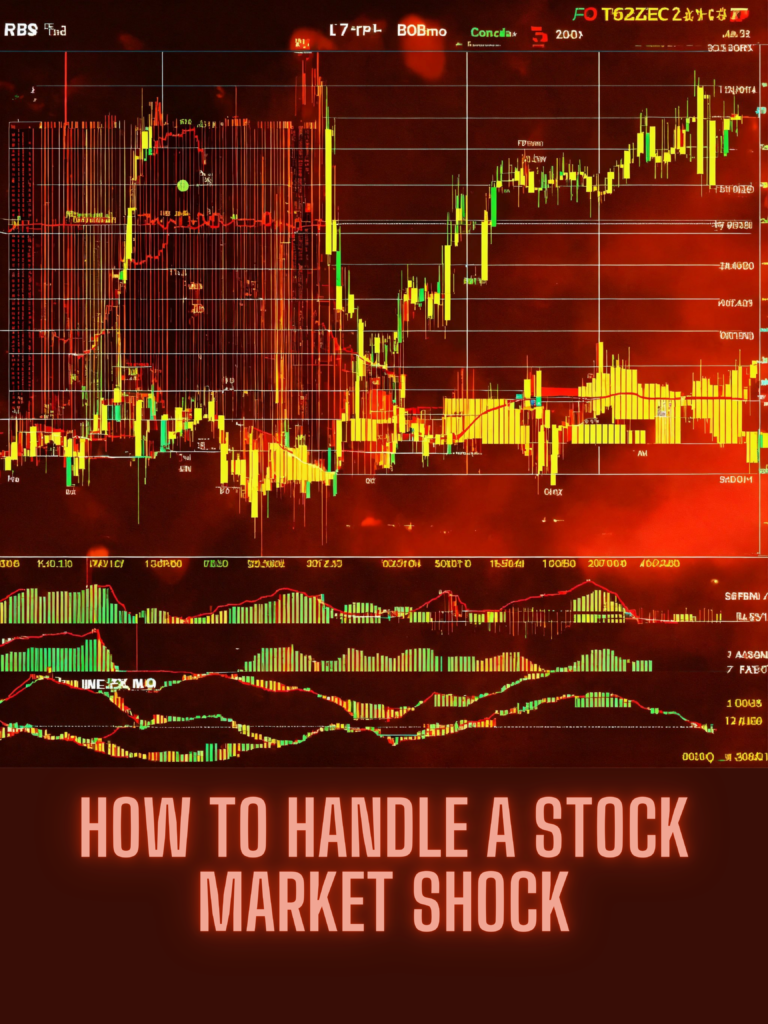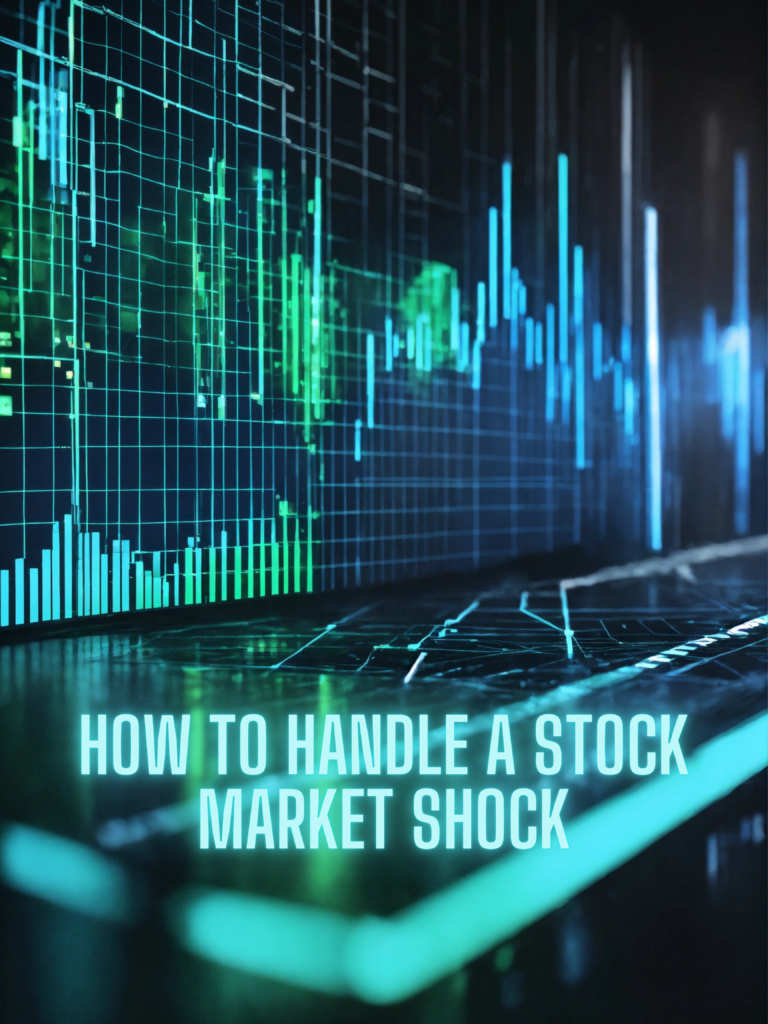The stock market is a volatile place, and it can be difficult to predict what will happen next. One day, everything is going well, and the next day, the market crashes. This can be a big shock to investors, especially those who are new to the game. In this article, we will discuss some tips on how to handle a big Stock Market Shock.
Investing in the stock market, much like boarding a Boeing plane, involves a delicate balance of risk and opportunity. Recent events have drawn parallels between the two, emphasizing the need for investors to anticipate potential shocks that may disrupt the seemingly invincible trajectory of U.S. stocks. In this article, we delve into 12 strategies to navigate a significant stock market shock, weaving in insights from recent market events and the perils associated with overconfidence.

12 Strategies to Handle a Stock Market Shock
- 1. Acknowledge the Illusion of Invincibility:
- 2. Diversify Your Portfolio:
- 3. Question the TINA Mentality:
- 4. Monitor Technical Levels:
- 5. Learn from Overconfidence Mistakes:
- 6. Revisit Fundamental Analysis: Handle a Stock Market Shock
- 7. Beware of the Fear of Missing Out (FOMO):
- 8. Reevaluate the VIX as a Greed Gauge:
- 9. Prepare for Risk Factors: Handle a Stock Market Shock
- 10. Challenge the Status Quo:
- 11. Stay Informed and Adaptive: Handle a Stock Market Shock
- 12. Prepare for Opportunities Amid Crisis:
- Conclusion: Handle a Stock Market Shock
- Answer Covered People also ask
- Disclaimer
1. Acknowledge the Illusion of Invincibility:
Boeing’s recent stock plunge serves as a poignant reminder that even industry giants can face unexpected challenges. Much like investors assuming perpetual market strength, the illusion of invincibility can cloud judgment, warranting a vigilant stance.
2. Diversify Your Portfolio:
Just as diversifying aircraft manufacturers mitigates risks, investors can spread their investments across various sectors and asset classes. This diversification strategy acts as a buffer, minimizing the impact of a downturn in any specific industry.
3. Question the TINA Mentality:
The “There Is No Alternative” (TINA) mindset may lead investors to overlook risks. By considering alternatives and reassessing strategies, investors can avoid blindly following popular mantras and explore potentially less risky investment avenues.

4. Monitor Technical Levels:
Boeing’s recent fall through key technical levels underscores the importance of monitoring charts and indicators. Investors should keep a close eye on moving averages and other technical signals to gauge the health of their investments.
5. Learn from Overconfidence Mistakes:
Boeing’s reversal of fortune highlights the dangers of overconfidence. Investors must reflect on their assumptions, ensuring they aren’t underestimating risks or becoming complacent in a rising market.
6. Revisit Fundamental Analysis: Handle a Stock Market Shock
Investors assumed people always have to fly, but unforeseen events challenged this notion. Revisiting fundamental analysis ensures investments align with current economic and market conditions, considering factors like earnings growth and industry dynamics.
7. Beware of the Fear of Missing Out (FOMO):
The market’s susceptibility to FOMO has shifted investment behavior towards buying high. Investors should resist blindly following trends, as it may lead to inflated valuations and increased risks.
8. Reevaluate the VIX as a Greed Gauge:
The distortion of the VIX as a greed gauge indicates a shift in investor sentiment. Reevaluating market indicators, particularly in times of low volatility, can help investors better interpret signals and assess potential risks.
9. Prepare for Risk Factors: Handle a Stock Market Shock
Once disregarded, risk factors should now be acknowledged and assessed. Considering geopolitical tensions, economic uncertainties, and other potential triggers for market shocks becomes crucial for effective risk management.
10. Challenge the Status Quo:
Boeing’s troubles shattered the belief in its perpetual safety, prompting a reevaluation of its investment potential. Similarly, challenging the status quo in a portfolio and adjusting strategies based on changing market dynamics is essential.
11. Stay Informed and Adaptive: Handle a Stock Market Shock
Just as aviation technology evolves, so does the stock market landscape. Staying informed about market developments and being adaptive in investment approaches enables investors to navigate changing conditions effectively.
12. Prepare for Opportunities Amid Crisis:
Investors who correctly anticipated Boeing’s troubles could have positioned themselves advantageously. Being vigilant, assessing potential shocks, and positioning portfolios to capitalize on opportunities during market turbulence can be a proactive strategy.
Conclusion: Handle a Stock Market Shock
In conclusion, handling a significant shock in the stock market requires a proactive and adaptive approach. Investors must acknowledge uncertainties, learn from past mistakes, and continuously reassess strategies to navigate the complexities of the financial landscape effectively. By doing so, they can better position themselves to weather market shocks and capitalize on opportunities for long-term success.
Answer Covered People also ask
1.How do you handle a stock market crash?
2.How do you handle stock market?
3.How to invest in a depression?
4.What to buy when market crashes?
5.What is the golden rule of stock?
6.What is the no loss strategy in stock market?
Disclaimer
This article has been created on the basis of internal data, information available publicly, and other reliable sources to be believed. The article may also include information which are the personal views/opinions of the authors. The information included in this article is for general, educational, and awareness purposes only and is not a full disclosure of every material fact.
All the information on this website i.e. World Virtual CFO – is published in good faith and for general information purposes only. World Virtual CFO does not make any warranties about the completeness, reliability, and accuracy of this information. These are my views for only information purposes. Any action you take upon the information you find on this website (World Virtual CFO), is strictly at your own risk. World Virtual CFO will not be liable for any losses and/or damages in connection with using our website. For details please refer to our disclaimer page.
Dr. Dinesh Sharma is an award-winning CFO and AI strategist with over two decades of experience in financial leadership, digital transformation, and business optimization. As the founder of multiple niche platforms—including WorldVirtualCFO.com—he empowers professionals and organizations with strategic insights, system structuring, and innovative tools for sustainable growth. His blogs and e-books blend precision with vision, making complex financial and technological concepts accessible and actionable.